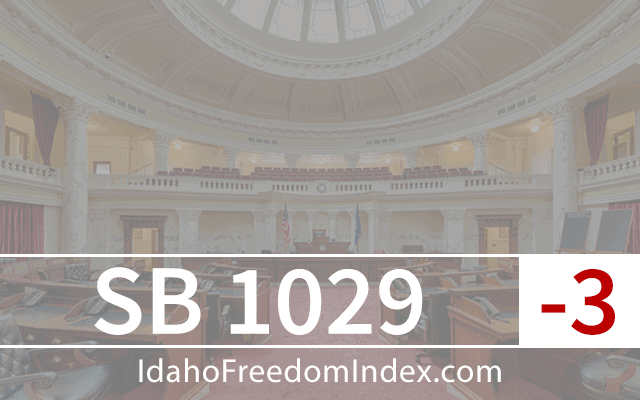


Bill description: SB 1029 would create a new school-turnaround program to provide additional funding and resources to Idaho’s worst public schools.
Rating: -3
Does it create, expand, or enlarge any agency, board, program, function, or activity of government? Conversely, does it eliminate or curtail the size or scope of government?
SB 1029 would establish a new program designed to provide failing public schools with a plan to improve. Schools would be eligible to participate in this program if they are in the bottom 5 percent of Idaho schools, according to the performance standards established by the state Board of Education. The state board would select the schools and oversee the program.
Last year, a similar proposal designated the schools which could receive support through this program “low-performing schools.” SB 1029 would designate these schools as “Schools in Need of Intervention” or SNIs for short. This euphemism does little to hide the fact that these public schools are failing.
If a public school is selected to participate, it would be paired with a “school turnaround expert” who would be responsible for assisting it with professional development for teachers, leadership training for administrators, and determining other ways the school could improve.
The school and its district would then be responsible for showing to the state board that it has made progress, has plans going forward, and has made this improvement plan a priority.
As a part of this program, the state board would establish a school leadership development program to train public school administrators. The board would hire an outside contractor to “provide leadership development training that emphasizes proven strategies for improving schools for school leaders and aspiring school leaders.” The administrators who go through this program and work in a failing public school could receive incentive pay.
SB 1029 would add another layer of bureaucracy to an already bloated education system.
(-1)
Does it increase government spending (for objectionable purposes) or debt? Conversely, does it decrease government spending or debt?
The fiscal note for SB 1029 states that the school turnaround programs would be subject to an appropriation, so there would be no direct fiscal impact. The fiscal note also states that $1.75 million has been appropriated to the state board for a pilot program for helping underperforming schools and training school administrators. This funding would be directed to the turnaround program under SB 1029.
Creating this program would put pressure on the Legislature and the governor to provide more funding. The fiscal note estimates that an additional $1,250,000 would allow for seven to nine more schools to receive support through the program.
The funding from this program would go toward school turnaround experts, who are contractors with the board, and directly to the failing districts with turnaround plans. If districts use the funding to accomplish key provisions of their plan, they would also have to put in a matching amount from other sources. The money which schools receive could be used for bonus pay for administrators, teachers and other employees, as a reward for improving metrics at the school.
(-1)
Does it increase government redistribution of wealth? Examples include the use of tax policy or other incentives to reward specific interest groups, businesses, politicians, or government employees with special favors or perks; transfer payments; and hiring additional government employees. Conversely, does it decrease government redistribution of wealth?
SB 1029 may benefit some public schools by providing additional resources. By granting these additional benefits only to the worst public schools in the state ( those in the bottom 5 percent), SB 1029 would benefit just a few schools and their employees and administrators as well as the private contractors which are selected as turnaround experts. This would be done at the expense of taxpayers and would take away from the limited resources available to other schools.
(-1)

